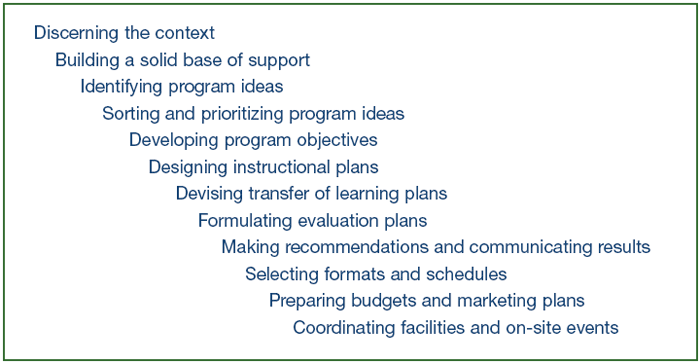
Two connecting dimensions of the third sub-process are evaluation and accountability. These emphasize the importance of obtaining hard evidence to verify the achievements in the program to significant stakeholders. In this case, those significant stakeholders were the federal government and Parliament. Regular mandated external evaluations helped to determine the effectiveness of the Business and Labour Partnership Program, and the costs incurred in producing the outcomes. As a result of the evaluations, the goals and mechanisms of the program shifted in the development and demonstration years and even more so in the period of program change. During this period, an increased emphasis was placed on accountability. As defined in the program planning model, accountability refers to the process whereby the organization is held accountable for planned program outcomes and the effectiveness of their efforts in producing the intended outcomes. As a result of the focus on government accountability, there was much disconnect between the target publics and the NLS as an organization.
Caffarella’s interactive model of program planning provides some insights into the important steps needed to plan and implement a workplace literacy project. It also helps to focus on steps needed in early partnership formation. In this interpretation, the term project is used interchangeably with the term program. Caffarella presents a guide for practice through her stepwise model as seen in Figure 5.